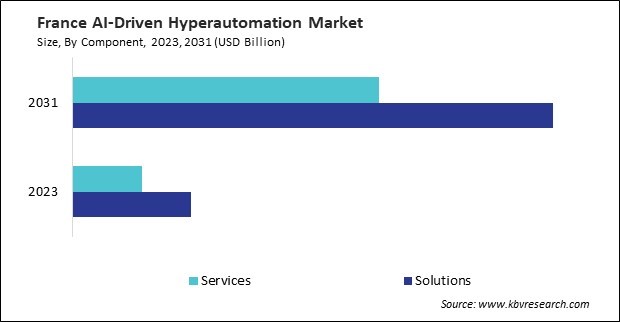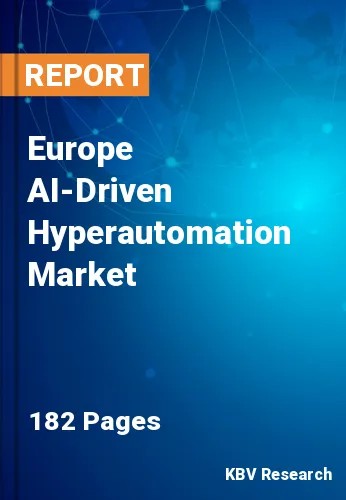The Europe AI-Driven Hyperautomation Market would witness market growth of 19.3% CAGR during the forecast period (2024-2031).
The Germany market dominated the Europe AI-Driven Hyperautomation Market by Country in 2023, and would continue to be a dominant market till 2031; thereby, achieving a market value of $10,232.2 million by 2031. The UK market is experiencing a CAGR of 18.3% during (2024 - 2031). Additionally, The France market would exhibit a CAGR of 20.3% during (2024 - 2031).

One of the primary factors behind the rapid adoption of AI-driven hyperautomation is the rising demand for efficiency and cost reduction. In today's highly competitive business environment, companies are always looking for new ways to improve the efficiency of their operations, lower their overhead expenses, and increase the productivity of their personnel. Manual processes, as well as human intervention, are frequently employed in conventional approaches to accomplish these objectives, which can be cost-prohibitive, error-prone, and time-consuming.
By integrating AI-driven hyperautomation into their workflows, businesses can automate repetitive tasks, minimize human error, and free up employees to focus on more strategic, value-adding activities. For instance, in financial institutions, AI can automate processes like customer data entry, compliance checks, and fraud detection, which previously required manual intervention.
The United Kingdom has been making significant strides in manufacturing automation, focusing on intelligent transport systems and autonomous vehicles. The UK government has made significant investments in research and development to establish itself as a global leader in autonomous vehicle technology, including the Centre for Connected and Autonomous Vehicles (CCAV). This emphasis on innovation drives increased demand for AI-based automation and edge computing solutions in industrial applications. The IFR reported a 51% rise in industrial robot installations in the UK in 2023, with 3,830 units installed. The automotive industry, in particular, is a major contributor, with robots increasingly employed in assembly tasks. These advancements in robotics and AI reinforce the UK’s dedication to leveraging hyperautomation to foster growth and maintain its competitive edge in the manufacturing sector. Hence, the regional market is expected to expand rapidly in the coming years.
Free Valuable Insights: The Global AI-Driven Hyperautomation Market will Hit USD 152.5 Billion by 2031, at a CAGR of 19.7%
Based on Component, the market is segmented into Solutions and Services (Professional Services and Managed Service). Based on Enterprise Size, the market is segmented into Large Enterprises and Small & Medium-Sized Enterprises (SMEs). Based on Technology, the market is segmented into Robotic Process Automation (RPA), Machine Learning (ML), Natural Language Processing (NLP), AI & Cognitive Computing, Intelligent Document Processing (IDP), Business Process Management (BPM), and Other Technology. Based on Function, the market is segmented into Process Automation, Data Analytics & Insights, Customer Service Automation, IT Operations Automation (ITOps), Business Process Management & Optimization, Document Processing Automation, and Other Function. Based on countries, the market is segmented into Germany, UK, France, Russia, Spain, Italy, and Rest of Europe.
By Component
By Enterprise Size
By Technology
By Function
By Country
Our team of dedicated experts can provide you with attractive expansion opportunities for your business.

